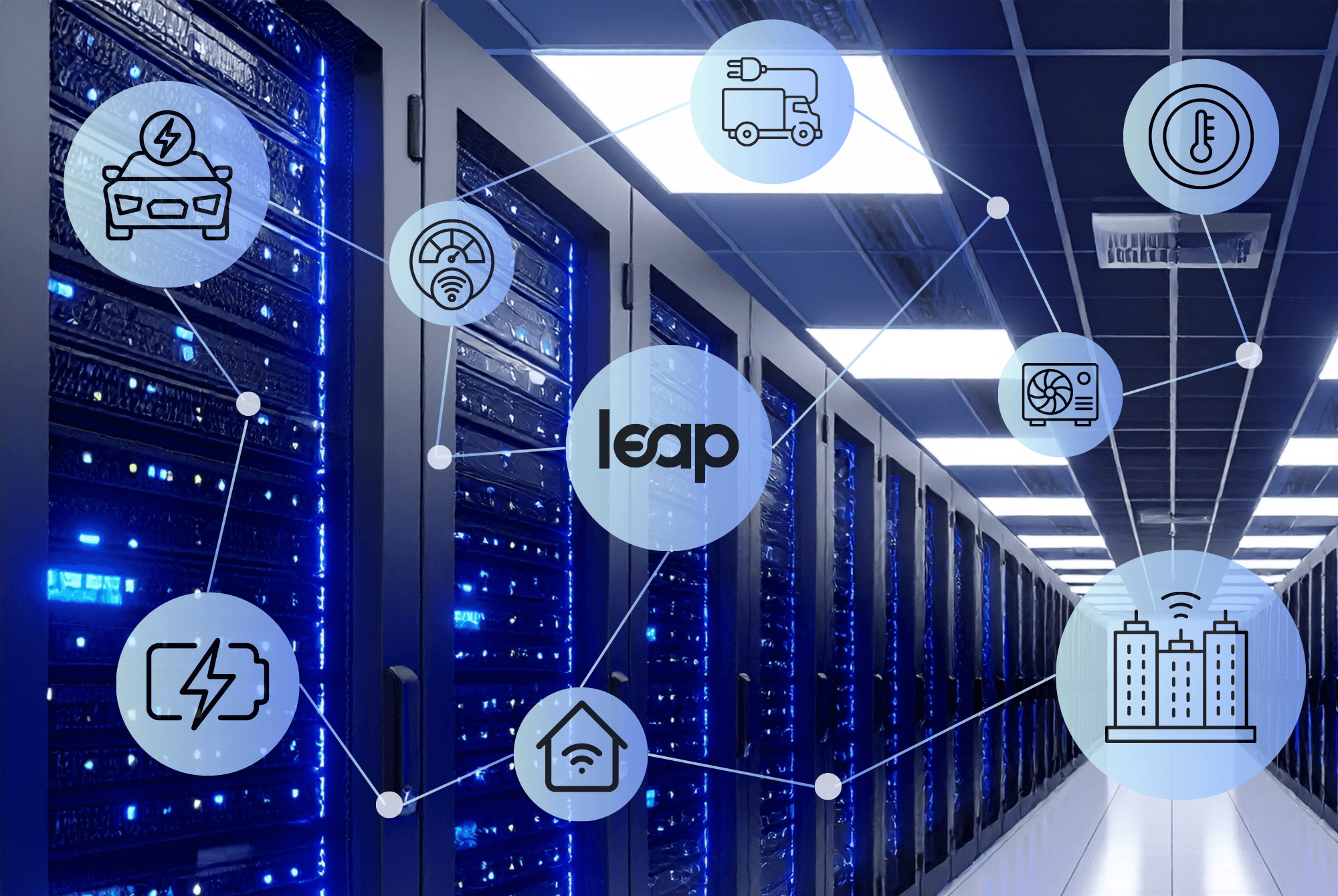October 16, 2023

The question sometimes comes up at Leap: How much of an impact are we making? Is the demand flexibility platform we’re building really driving forward our mission to decarbonize the world’s electric grids?
We’ve been saying “yes” since the company started in 2017, but it’s always a good sign when the outside world agrees. That affirmation has amped up in recent months. Recent industry trends and reports have underscored that we have reached a pivotal moment for harnessing the power of distributed energy resources (DERs) to transform the electric grid.
Why DERs? Why now?
We started Leap in 2017 because we saw several crucial trends converging to create a new opportunity for DERs to decarbonize the power system:
Renewables are ever cheaper and more plentiful. They make up the vast majority of new grid interconnections and are by far the fastest-growing source of supply. This is lowering the carbon intensity of the electric system in the U.S. and elsewhere.
While cheap and clean, the variability of renewables creates a need for “firming” resources on the grid to maintain reliability. Traditionally, this has been supplied by peaking power plants, fueled by natural gas. But we of course need to retire those to eliminate carbon emissions.
Climate change is driving extraordinary weather worldwide and associated grid stress. This year is both the hottest on record AND one of the mildest our children will experience in their lifetimes.
Advances in technology, coupled with funding from policies like the Inflation Reduction Act, have spurred tremendous growth across the DER resource class. Electric vehicles (EVs), battery storage, smart thermostats, heat pumps, smart water heaters and other technologies are growing at unprecedented speed, but they’re not participating as grid resources (yet) commensurate with their growth.
And today, we’re seeing another factor come into play:
Load growth: Due to extreme temperatures and the trend towards electrification, the electric system is seeing that both peak demand and overall usage are increasing quickly.
That’s new in developed countries. Over the past few decades, utilities and regulators have been uncertain about investing in the grid because demand has been relatively flat. No more. Recent reports have made it clear that we’re back on a path to growth. We’re expecting 60 GW of growth in peak demand in the U.S. alone by 2030, according to the Department of Energy’s Virtual Power Plants - Pathways to Commercial Liftoff report. Around-the-clock electricity use will be increasing too, as we electrify transport, HVAC and more. To accommodate this growth - as well as additional power plant retirements - we need capacity additions of 200 GW in the U.S. alone by 2030, according to the Liftoff report.
Utilities and regulators have raised alarms that they’re unprepared for the scope and speed of electrification. Whether at the distribution level (accommodating EV chargers in every household) or at the bulk transmission level (building new transmission to accommodate GW of new renewables and batteries), they simply can’t finance and build fast enough.
Their proposed solution is the status quo. Keep existing fossil fuel plants online, and slow down the interconnection of renewables and EV chargers. All while the globe passes dangerous climate tipping points.
A perfect storm for VPPs
There’s growing recognition across the energy industry that virtual power plants (VPPs) are a key alternative to that status quo.
According to the Liftoff report: “A VPP made up of residential smart thermostats, smart water heaters, EV chargers, and BTM batteries, for example, could provide peaking capacity at 40 to 60% lower net cost to a utility than alternatives (a utility-scale battery and a natural gas peaker plant).” The report goes on to say: “Deploying 80-160 GW of VPPs by 2030 to help address national capacity needs could save on the order of $10B in annual grid costs and will direct grid spending back to electricity consumers.”
The work Leap and our partners are doing to scale VPPs will save billions of dollars, which will go back into customers’ pockets, instead of purchasing more fossil fuels that release even more carbon in the atmosphere. And VPPs are the only resources that can spin up fast enough to solve these critical grid constraints.
Everyone wants to be a VPP
After the Leap team attended several industry conferences this fall, it was clear the word was out - everyone was talking about VPPs. Each of these conferences underscored the scope of the problem that we’re tackling, and demand flexibility’s unique ability to enable a decarbonized future.
Leap is connecting with more and more energy technology companies interested in launching their own VPPs in order to differentiate their product offerings and achieve their sustainability goals. And, we’re expanding our work with industry leaders like Sunrun, Nuvve and Stem to help scale their VPP solutions and create more value for their customers.
Back to the question I started with: “How much of an impact are we making?” It’s easy to think that our VPPs are only reducing emissions from peaker plants on the hottest days, a good thing but not making much of a dent in aggregate carbon emissions.
In reality, we’re in the business of remaking the electric system. Today, our partner community is keeping the lights on as we add more and more renewables. We’re facilitating the retirement of fossil fuel plants. We’re the key solution to meet the needs of this decade.
As we look further out, Leap and our partners are building the digital infrastructure that will enable a carbon-free grid. We’re orchestrating the interplay between renewables and DERs to ensure that batteries charge when the sun shines, that smart thermostats and HVAC systems shift demand when the sun goes down and that EVs charge when the wind is blowing and discharge when it’s not.
VPPs aren’t just making an impact - VPPs are the energy transition in action.
__
More from our blog: Learn how virtual power plants combat climate change.


